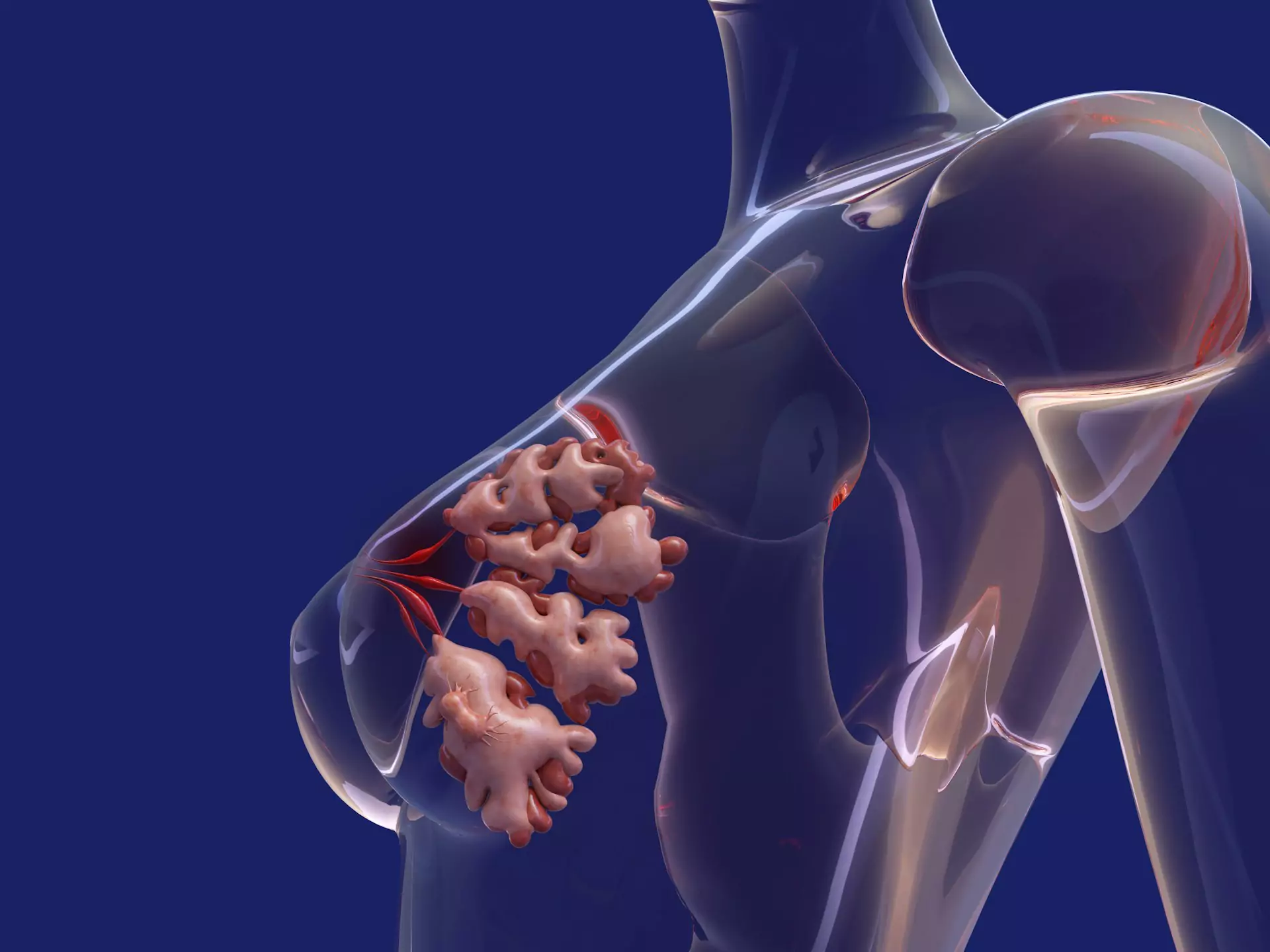What Are the 4 Stages of Breast Cancer?

Breast cancer is one of the most common cancers worldwide, affecting millions of women and even some men. It occurs when cells in the breast begin to grow abnormally and form a tumor. Some tumors stay localized, while others spread to nearby tissues or even distant organs.
To figure out how far the cancer has spread, doctors use a staging system. This helps them decide on the best treatment plan based on the size of the tumor and whether it has spread.
Let’s go over the stages of breast cancer and the treatments available for each!
The staging system: TNM classification
To figure out how far breast cancer has spread, doctors use a staging system. One of the most common is the TNM classification, created by the American Joint Committee on Cancer (AJCC). This system helps doctors:
-
Understand the size and spread of the tumor
-
Plan effective treatments
-
Predict survival rates and outcomes
The TNM system classifies cancer based on:
-
T: Size of the tumor
-
N: Spread to nearby lymph nodes
-
M: Metastasis (spread to distant organs)
Now, let’s take a closer look at each stage:
T stage
The T stage tells doctors how big the tumor is and if it has spread within the breast or nearby areas. To make it easier to understand, doctors break it down into smaller stages based on size and growth:
-
T0: No tumor is found in the breast, but abnormal cells may be present in the milk ducts or lobules.
-
Tis (Carcinoma in Situ): Non-invasive cancer that hasn’t moved beyond its original location. This includes ductal carcinoma in situ (DCIS) and lobular carcinoma in situ (LCIS).
-
T1: At this stage, the tumor is 2 cm or less, similar to a peanut in size.
-
T2: The tumor is 2 to 5 cm, closer to the size of a lime.
-
T3: The tumor is larger than 5 cm, roughly the size of a lemon
-
T4: The tumor has spread outside the breast to the chest wall or skin.
N stage
Lymph nodes are tiny structures that help your body fight infections, but they can also be pathways for cancer to spread. The N stage describes whether cancer has reached these nodes.
-
N0: No cancer found in nearby lymph nodes.
-
N1: Cancer is in 1-3 lymph nodes under the arm (axillary nodes) or near the breastbone.
-
N2: Cancer is in 4-9 lymph nodes or has reached nodes inside the chest.
-
N3: Cancer is in 10 or more lymph nodes or has spread to nodes near the collarbone.
M Stage (Metastasis)
The M stage indicates whether cancer has spread beyond the breast and nearby lymph nodes to other parts of the body.
-
M0: No sign of distant spread. Cancer remains in the breast and nearby lymph nodes.
-
M1: Cancer has reached distant organs such as the lungs, liver, bones, or brain, which is known as metastatic breast cancer.
Stages of breast cancer
Breast cancer is classified into different stages to help guide treatment decisions. Here’s what each stage means:
Early-stage breast cancer (Stage 0)
Stage 0 means that the cancerous cells are still in the ducts or lobules of the breast and haven’t invaded nearby tissues. This is known as carcinoma in situ, meaning “in its place.”
-
Ductal carcinoma in situ (DCIS): This means abnormal cells are inside the milk ducts, but they haven’t spread beyond them. It’s considered the earliest form of breast cancer but is still non-invasive.
-
Lobular carcinoma in situ (LCIS): Abnormal cells are in the lobules (milk-producing glands), but they haven’t spread. LCIS isn’t cancer but increases the risk of developing breast cancer in the future.
Stage 1 breast cancer
At this stage, the cancer has become invasive, meaning it has started spreading beyond the milk ducts or lobules into nearby breast tissue. However, it is still small and confined.
-
Stage 1A: Tumor is ≤2 cm in size and hasn’t spread to lymph nodes.
-
Stage 1B: Instead of a solid tumor, small clusters of cancer cells are found in nearby lymph nodes, but the main tumor remains very small or undetectable.
Stage 2 breast cancer
By Stage 2, the tumor is larger than in Stage 1, and cancer may have spread to nearby lymph nodes.
-
Stage 2A: Either the tumor is 2–5 cm but hasn’t spread, or the tumor is ≤2 cm and has spread to 1–3 lymph nodes.
-
Stage 2B: Tumor is >5 cm but hasn’t spread to lymph nodes, or the tumor is 2–5 cm and has spread to 1–3 lymph nodes.
Stage 3 breast cancer
At this stage, cancer is more advanced but still hasn’t spread to distant organs.
-
Stage 3A: The tumor is larger than 5 cm and has spread to 4–9 lymph nodes.
-
Stage 3B: Cancer has reached the chest wall or skin, possibly leading to swelling or ulcers.
-
Stage 3C: Cancer has invaded 10 or more lymph nodes, including those near the collarbone.
Stage 4 breast cancer (Metastatic breast cancer)
In Stage 4, breast cancer has spread beyond the breast and nearby lymph nodes to distant organs. At this point, the focus shifts from curing the disease to managing symptoms, slowing its progression, and maintaining quality of life.
Some common sites of metastasis are:
-
Bones (59%)
-
Lungs (21%)
-
Liver (13%)
-
Brain (8%)
Breast cancer treatment based on stages
Your treatment plan depends on the stage of your breast cancer, along with factors like hormone receptor status and overall health. Here’s what you can expect at each stage.
Stage 0
At this stage, the goal is to remove abnormal cells and lower the chances of cancer coming back. Treatment options may include:
-
Surgery to take out the affected tissue with either a lumpectomy or mastectomy.
-
Radiation therapy after a lumpectomy to help prevent cancer from recurring.
-
Hormone Therapy, if your cancer is hormone receptor-positive (ER+). Medications like tamoxifen or aromatase inhibitors may help lower future risks.
If you have LCIS, treatment may not be needed, but regular check-ups are important.
Stage I
Since the cancer is still small and hasn’t spread much, treatment focuses on removing it and reducing the risk of it coming back. To achieve this, doctors may recommend:
-
A lumpectomy or mastectomy to take out the tumor. A sentinel lymph node biopsy checks if the cancer has spread.
-
Radiation therapy, usually after a lumpectomy, to destroy any leftover cancer cells.
-
Hormone therapy if the cancer is ER-positive or PR-positive to help prevent it from returning.
-
Targeted therapy like trastuzumab for HER2-positive cancers to slow or stop cancer growth.
-
Chemotherapy if the cancer is aggressive or high-risk to help kill cancer cells.
Stage II
At this stage, the tumor is bigger or has spread to nearby lymph nodes, so treatment is more aggressive. It may include:
-
Surgery with either a lumpectomy or mastectomy. Lymph nodes may also be removed if needed.
-
Radiation therapy after breast-conserving surgery or if cancer has spread to the lymph nodes.
-
Chemotherapy before surgery (neoadjuvant chemotherapy) to shrink larger tumors and make them easier to remove.
-
Hormone therapy if the cancer is ER-positive or PR-positive to help prevent it from coming back.
-
Targeted therapy like trastuzumab for HER2-positive cancers to block cancer growth.
-
Genetic testing (such as Oncotype DX) to help decide if chemotherapy is necessary for some hormone receptor-positive cancers.
Stage III
At this stage, the cancer has spread more into the lymph nodes or nearby tissues, so treatment is more intense. It may include:
-
Chemotherapy before surgery (neoadjuvant therapy) to shrink the tumor. If the cancer is HER2-positive, targeted treatments like trastuzumab and pertuzumab may be added.
-
Surgery, usually a mastectomy, though some may still be able to have a lumpectomy. Lymph nodes are often removed as well.
-
Radiation therapy after surgery to target and kill any remaining cancer cells.
-
Hormone therapy for ER-positive or PR-positive cancers to help lower the risk of it coming back.
-
Immunotherapy (pembrolizumab) for triple-negative breast cancer to help the immune system fight cancer.
-
Targeted therapy for HER2-positive cancers to slow or stop cancer growth.
Stage IV (Metastatic Breast Cancer)
At this stage, the goal is to manage symptoms and slow the progression of the cancer. Options may include:
- Systemic therapy, the main treatment approach, which includes:
-
Chemotherapy to slow cancer growth.
-
Targeted therapy like trastuzumab for HER2-positive cancers.
-
Hormone therapy for ER-positive or PR-positive cancers.
-
Immunotherapy (pembrolizumab) for triple-negative breast cancer.
-
Radiation and surgery to relieve pain or control tumor growth in specific areas.
-
Palliative care to manage symptoms and support overall well-being.
Every treatment plan is personalized, so work with your doctor to choose the best options for you. Quality Care Global (QCG) can connect you with the best hospitals and specialists worldwide for affordable and quality breast cancer treatment.
Is breast cancer curable?
Breast cancer is often treatable, especially when caught early. Many people with Stage 0, I, or II breast cancer complete treatment and remain cancer-free.
For more advanced stages, like Stage III and IV, the goal is to manage the cancer and slow its spread. While Stage IV breast cancer isn’t usually curable, new treatments are helping people live longer and with a better quality of life.
Survival rates for different breast cancer stages
Here’s a look at the five-year survival rates showing how long people typically live after diagnosis:
| Stage | Five-year survival rate |
|---|---|
| Stage 0 | ~100% |
| Stage I | ~90–100% |
| Stage II | ~93% |
| Stage III | ~73% |
| Stage IV | ~32% |
Since every case is different, working with your doctor to find the best treatment plan is always the best approach. And if you need help, we can connect you with the best doctors worldwide.

